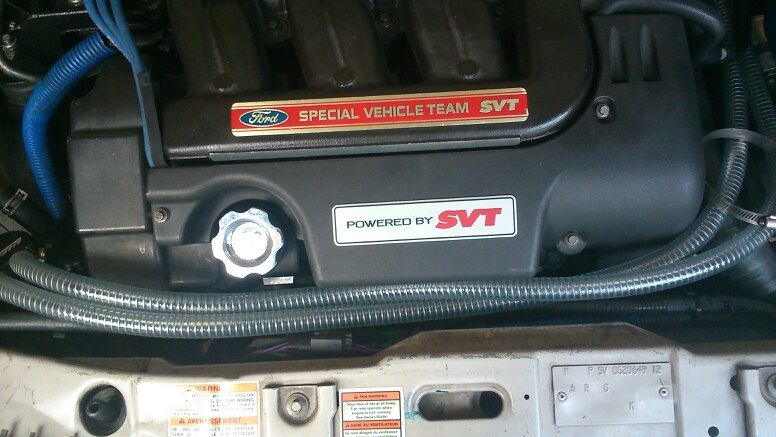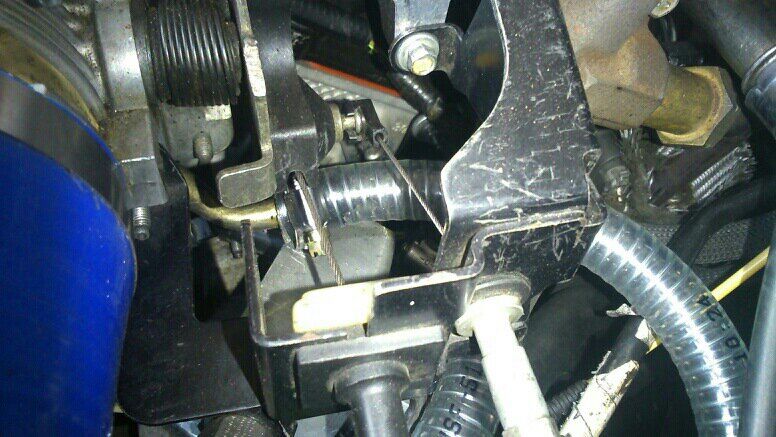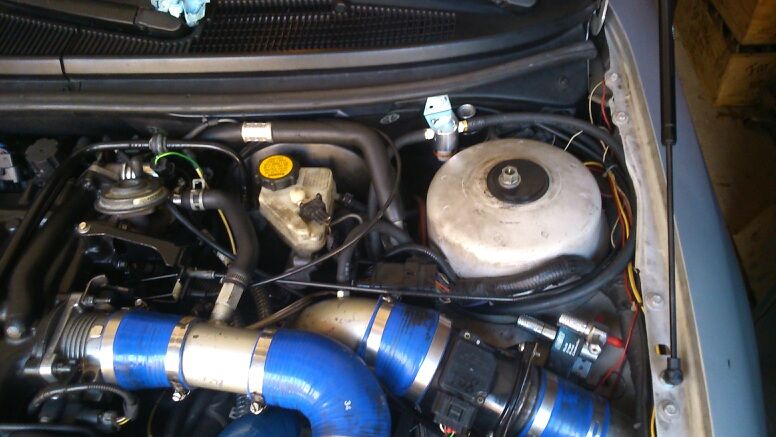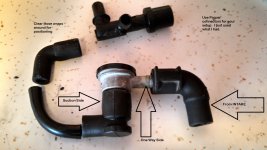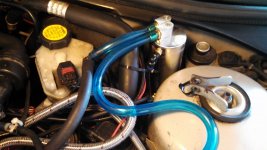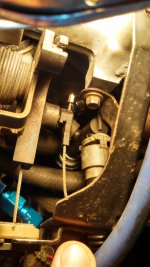PCV on boosted engines gets complicated, more-so than N/A.
I'll echo Beans suggestion, the oil trap needs to go between the oil separator output on the engine block and the PCV valve. When the engine is operating off-boost with vacuum in the intake manifold, this is where most of the air and oil movement is going to occur. You need to have a PCV valve or check valve of some kind in this line to keep the line from the intake manifold from pressurizing the crankcase when under boost.
The engine and PCV system also needs a fresh air source, and that's what the hose from the intake tube (prior to the throttle body) and the nipple on the forward valve cover does. This last connection is what makes problems with boosted engines, because the fresh air hose from the intake to the valve cover will pressurize the crankcase under boost, and this can blow out crankshaft seals, this happened to me in my boosted SHO motor. The calibration in these motors is counting on the PCV flow to be metered by the MAF, so it isn't always as easy as just throwing a little filter vented to atmosphere on the valve cover port and saying I'll just pull in un-metered air while not under boost.
Frequently on boosted engines, the valve cover fresh air source is connected to the turbo compressor suction side. It works two ways here:
1. Under low to no boost with vacuum in the intake manifold, it's a source of fresh air that flows IN the valve cover so the PCV system can pull on the crankcase through the PCV valve. So, you need oil trap number 1 between the engine block oil separator and the PCV valve to keep from oiling the intake manifold.
2. Under boost, the PCV valve closes so we don't pressurize the crankcase, and the suction side of the turbo goes pretty low pressure, so the crankcase is scaveged through the valve cover back to the turbo inlet. Unfortunately, this oils up the turbo, so you will need oil trap number 2 in this line as well.
Make sense?
